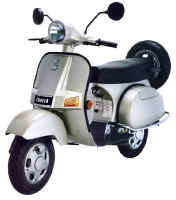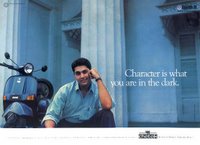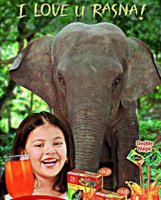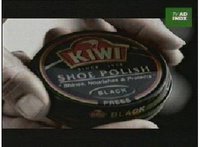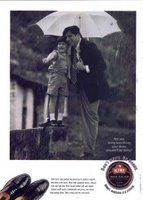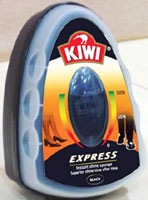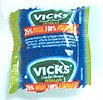
Company: Colgate
Agency : Rediffusion
Palmolive is one of the oldest brands in the country. It was launched in India in 1937. Owned by Colgate- Palmolive ltd, the origin of this soap dates back to 1898  . BJ Johnson company, owned by a person known as Caleb Johnson introduced a soap made from Palm and olive called as Palmolive. The soap was such a huge success that the company changed the name to Palmolive in 1917. It merged with another soap making company Peet Brothers to become Palmolive Peet. It later merged with Colgate in 1928.
. BJ Johnson company, owned by a person known as Caleb Johnson introduced a soap made from Palm and olive called as Palmolive. The soap was such a huge success that the company changed the name to Palmolive in 1917. It merged with another soap making company Peet Brothers to become Palmolive Peet. It later merged with Colgate in 1928.
 . BJ Johnson company, owned by a person known as Caleb Johnson introduced a soap made from Palm and olive called as Palmolive. The soap was such a huge success that the company changed the name to Palmolive in 1917. It merged with another soap making company Peet Brothers to become Palmolive Peet. It later merged with Colgate in 1928.
. BJ Johnson company, owned by a person known as Caleb Johnson introduced a soap made from Palm and olive called as Palmolive. The soap was such a huge success that the company changed the name to Palmolive in 1917. It merged with another soap making company Peet Brothers to become Palmolive Peet. It later merged with Colgate in 1928.Palmolive in India did not have a success story to boast about. Colgate marketed its personal care products like soaps , shampoo and shaving preparation products under the Palmolive brand name.
Palmolive was a reluctant brand which was never a serious player in the Indian personal care market. Although the brand comes from one of the most respected FMCG companies in the world, it never fully realised the potential.
Palmolive soaps were of high quality and competed in the premium segment of the soap market. The cream soap and the nice fragrance were a hit during the eighties and nineties. But some where the brand lost its way. Palmolive was not able to create a meaningful differentiation in the crowded soap category. Facing stiff competition, the brand shed the premium image and went after price discounts and freebies.
Co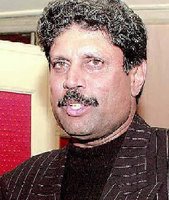 mpared to the soaps , Palmolive shaving cream fared well. In the 150 crore shaving preparation market , Palmolive had a share of 21%. Palmolive earlier used Kapil to endorse the shaving cream and the baseline " Palmolive da jawab nahin" is still famous. In the shaving cream market also , the brand is languishing because of lack of support from the company. The shaving preparation category is more functional oriented where what matters most is the product performance. The category is witnessing a sea change with the customer preference shifting from cream to gel and foam. At present, the category is dominated by Gillette.
mpared to the soaps , Palmolive shaving cream fared well. In the 150 crore shaving preparation market , Palmolive had a share of 21%. Palmolive earlier used Kapil to endorse the shaving cream and the baseline " Palmolive da jawab nahin" is still famous. In the shaving cream market also , the brand is languishing because of lack of support from the company. The shaving preparation category is more functional oriented where what matters most is the product performance. The category is witnessing a sea change with the customer preference shifting from cream to gel and foam. At present, the category is dominated by Gillette.
Of late Colgate is now focusing on personal care with a series of product launches. In 2003 Palmolive launched Aroma variant with extracts from Orchid and jasmine. The product has been mpared to the soaps , Palmolive shaving cream fared well. In the 150 crore shaving preparation market , Palmolive had a share of 21%. Palmolive earlier used Kapil to endorse the shaving cream and the baseline " Palmolive da jawab nahin" is still famous. In the shaving cream market also , the brand is languishing because of lack of support from the company. The shaving preparation category is more functional oriented where what matters most is the product performance. The category is witnessing a sea change with the customer preference shifting from cream to gel and foam. At present, the category is dominated by Gillette.
mpared to the soaps , Palmolive shaving cream fared well. In the 150 crore shaving preparation market , Palmolive had a share of 21%. Palmolive earlier used Kapil to endorse the shaving cream and the baseline " Palmolive da jawab nahin" is still famous. In the shaving cream market also , the brand is languishing because of lack of support from the company. The shaving preparation category is more functional oriented where what matters most is the product performance. The category is witnessing a sea change with the customer preference shifting from cream to gel and foam. At present, the category is dominated by Gillette. well received. In 2004 Palmolive launched a shower gel variant which is a new category . The product is promoted along the baseline " Ignite your senses".
well received. In 2004 Palmolive launched a shower gel variant which is a new category . The product is promoted along the baseline " Ignite your senses".I have been researching this brand but there is very less data available with regard to the campaigns and launches which shows that there is nothing much to write about this . Well for a marketer it is the most pitiable situation when nothing can be written about the brand: be it good or bad.
Palmolive is a brand that is trying to revive itself. But for that the brand should decide on what it want to be? May be the answer is with the customer.
